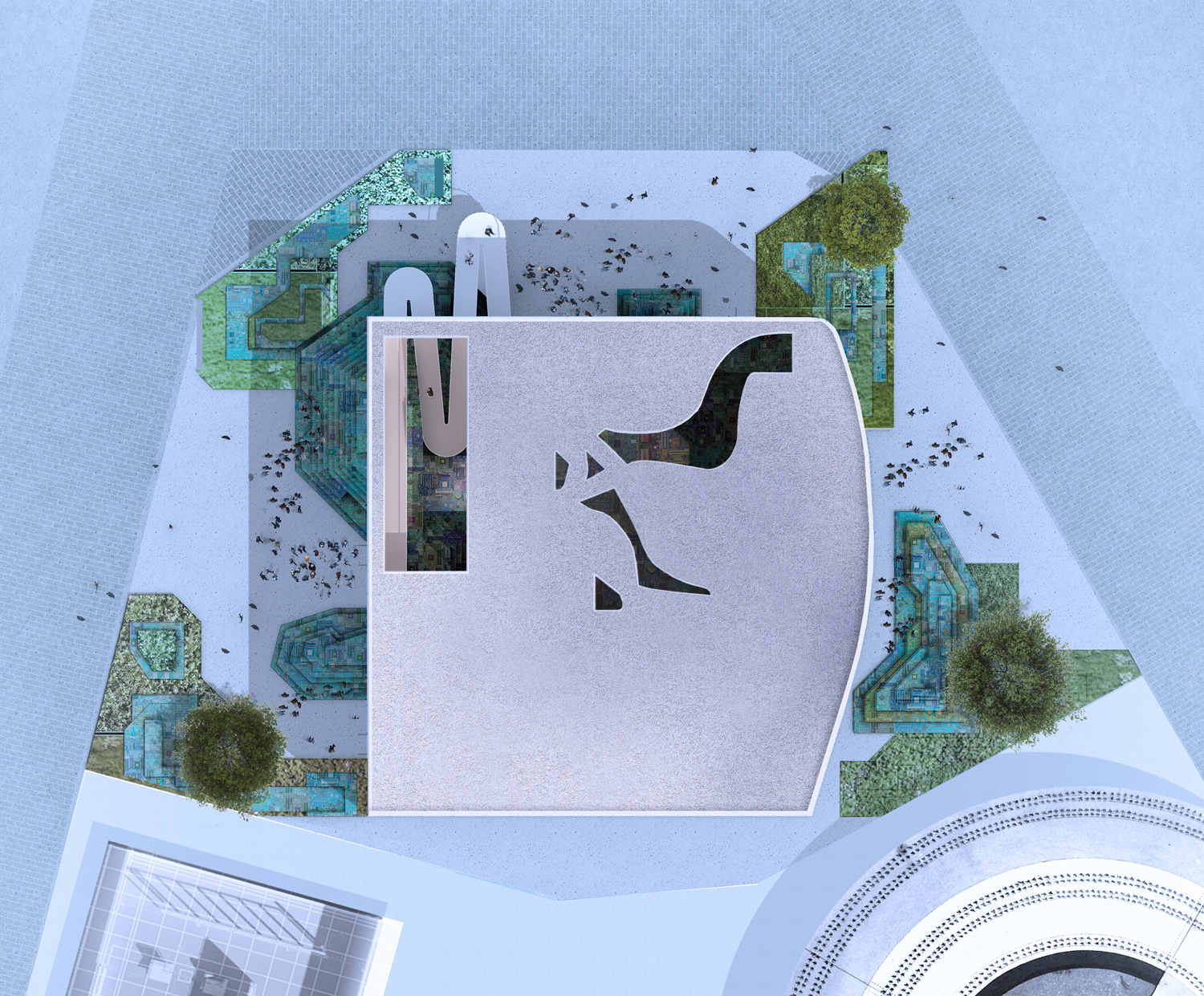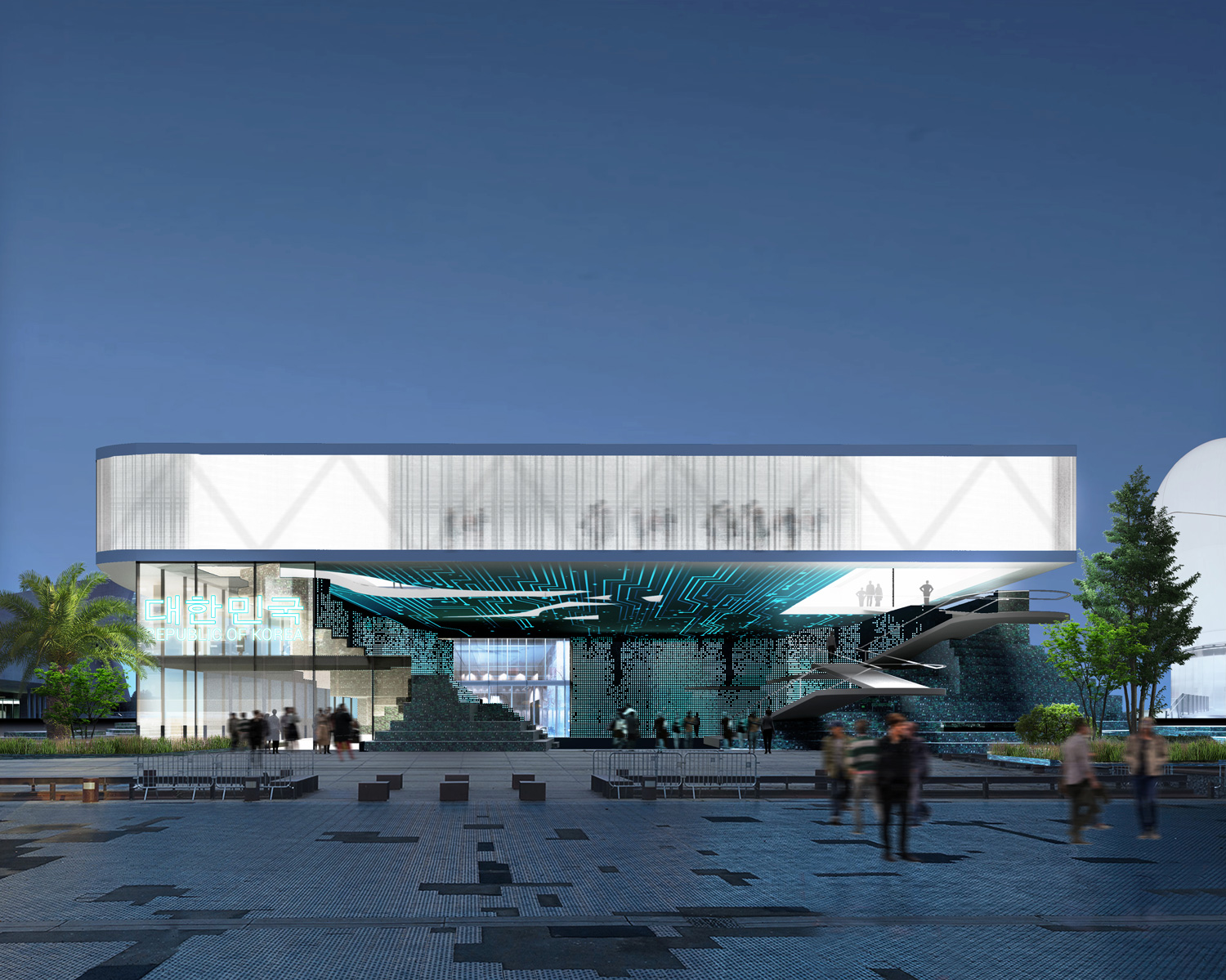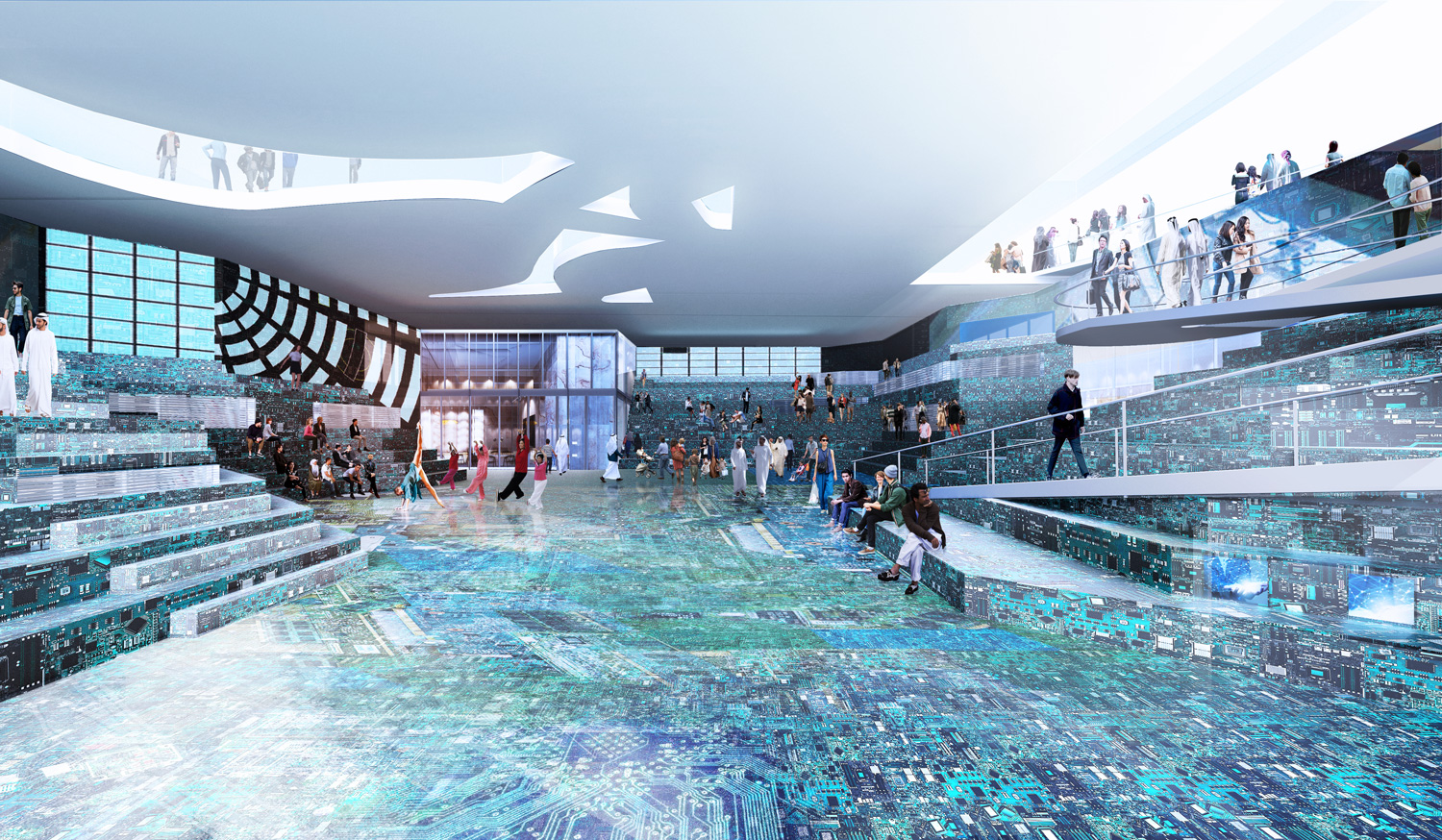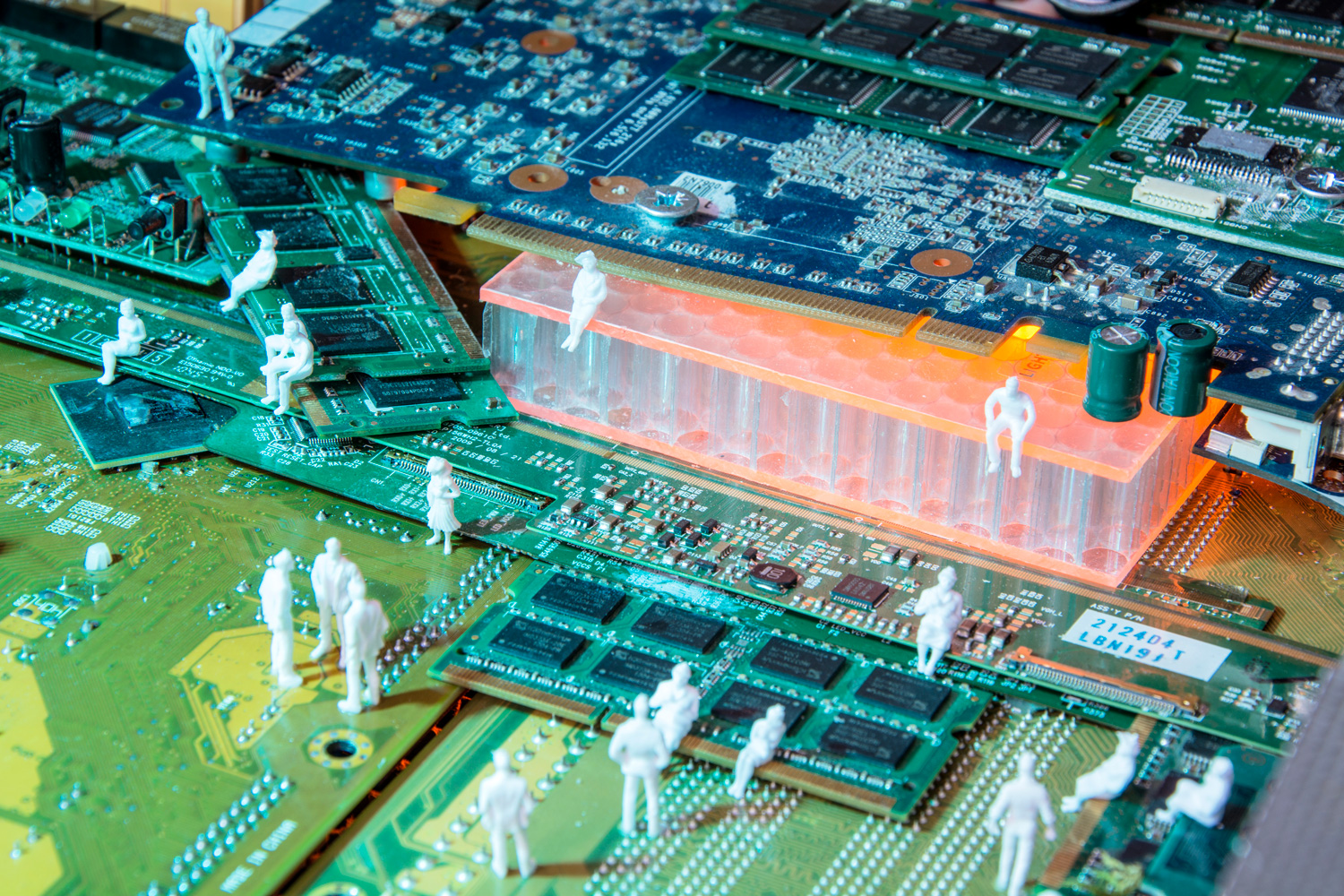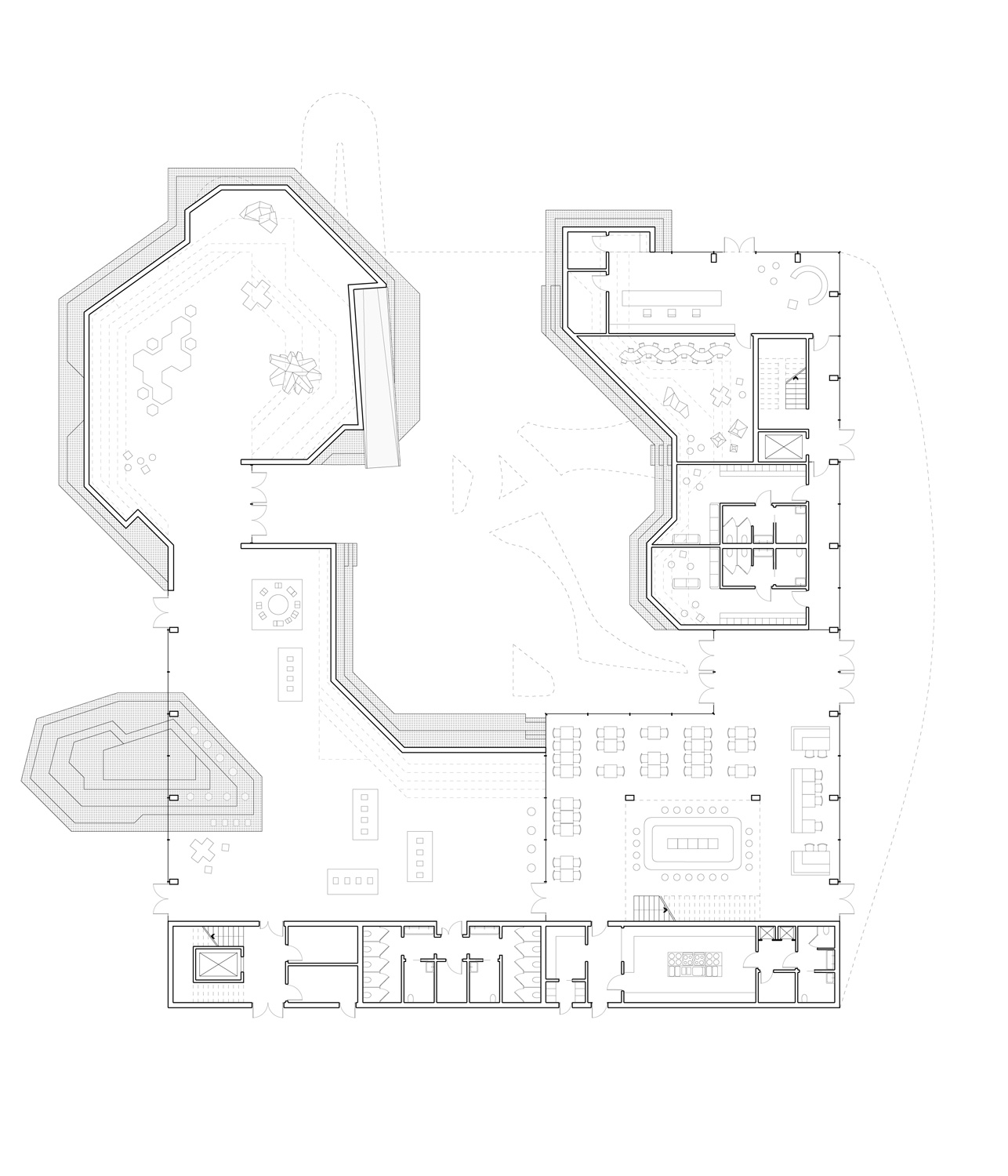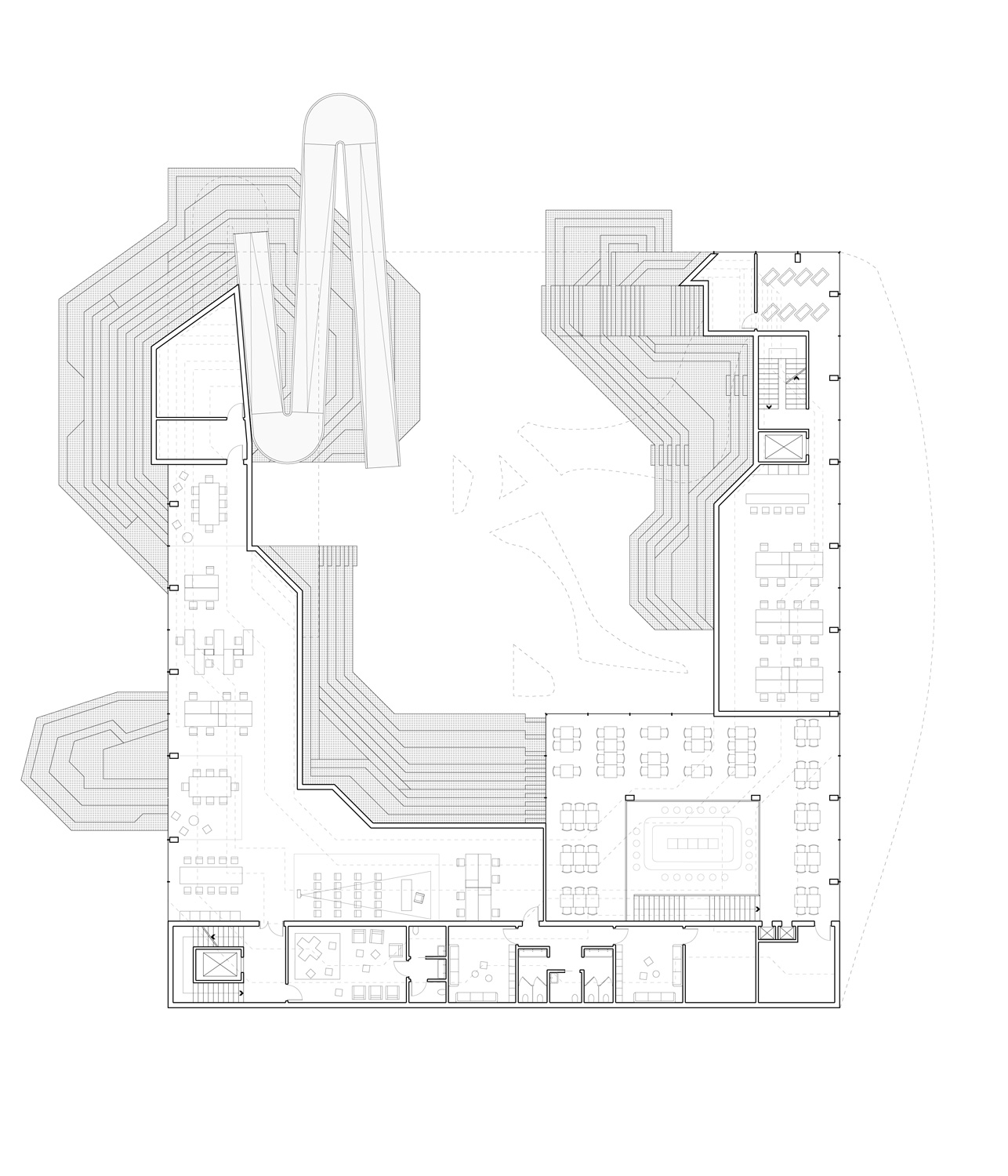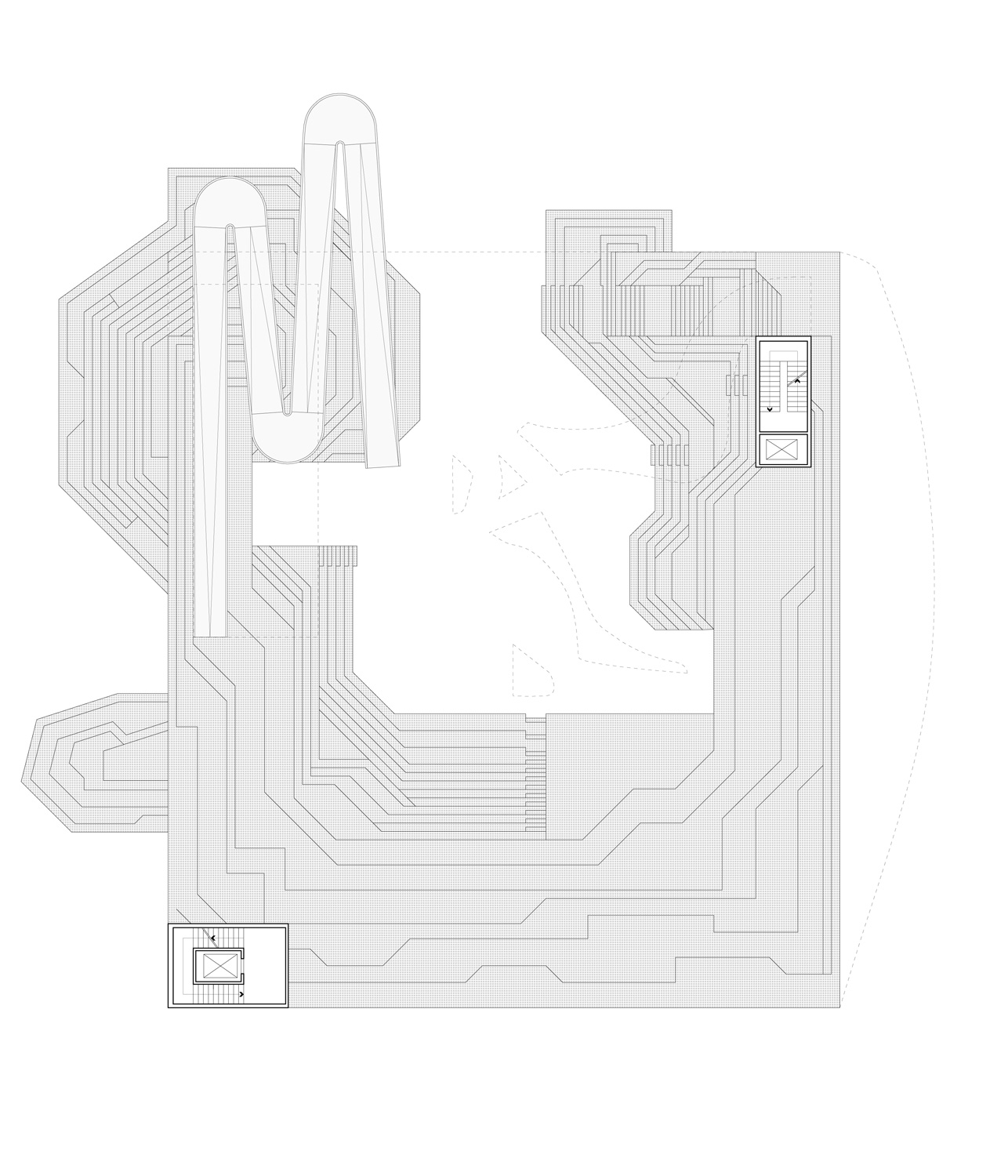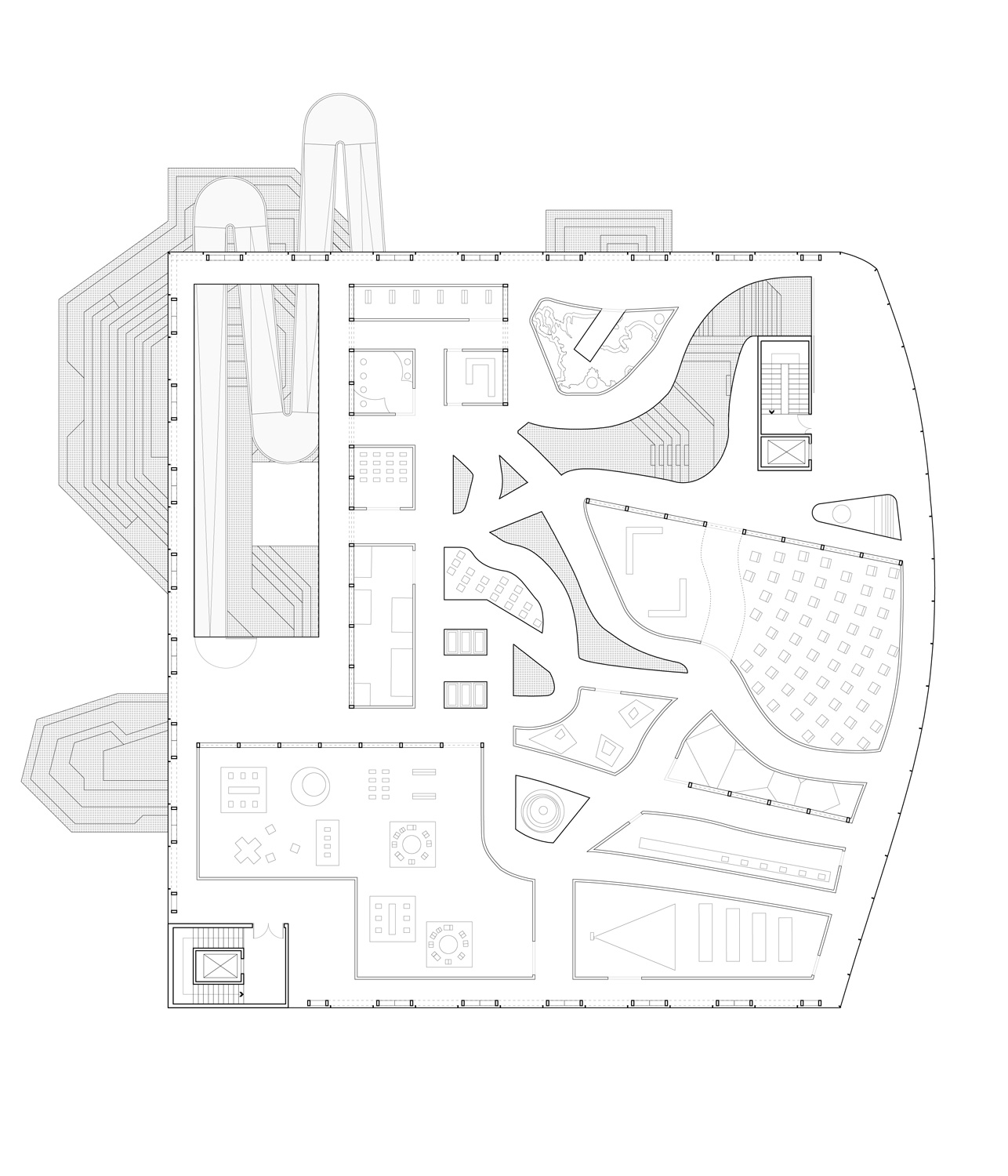2416-SUS-DBX.EA-2018
Client: KOTRA Korea TradeInvestment Promotion Agency
Status: Competition (2018)
Clasification: Finalist
Location: Dubai, United Arab Emirates
Climate: Desert / arid, Hot
Material: Metal
Environment: Desert
Visualizer: Studio
Scale: 5.000 ㎡ Medium
Types: Cultural, Museum
The proposal is a physical manifestation of the digital and the mechanical infrastructures that enable our Noosphere, the sphere of human consciousness and mental activity, to connect and to communicate. Our ability to innovate how we mobilize our goods and communicate our ideas allowed us to reach beyond our regional and national boundaries. Itʼs no news that we can now mobilize our thoughts and ideas instantly all over the world.
However, unlike the rails, roads, and airports that allow us to be physically mobile through trains, cars, and airplanes, the infrastructure and the hardware that enable our digital mobility are buried, hidden, and often invisible. How do we spatialize the invisible infrastructure that allows us to be connected more than we ever could have imagined?
Over few decades, South Korea has embraced the possibility of the digital infrastructure and has now become the forefront of the new 5g technology. The constant upgrade and update of the digital technology that we are all accustomed to comes with incredible amount of mechanical, physical and digital engineering to make it into a reality.
The expo is an opportunity to display the interconnectivity between both the digital and the physical engineering that allows for our future reality to come. The idea is to investigate the contrast between hardware and software, the intangible lightness of the cloud and the invisible hardware behind it.
The ground of the expo is made from ewaste materials that is physically manifested in the form of a topography. Obsolete hardware forms a platform of display for the much anticipated digital technologies to come in the full volume resting on the amphitheater. Within the pavilion, visitors can meander around and create their own paths as the pavilion is strategically designed to be used as a tool to connect people.
